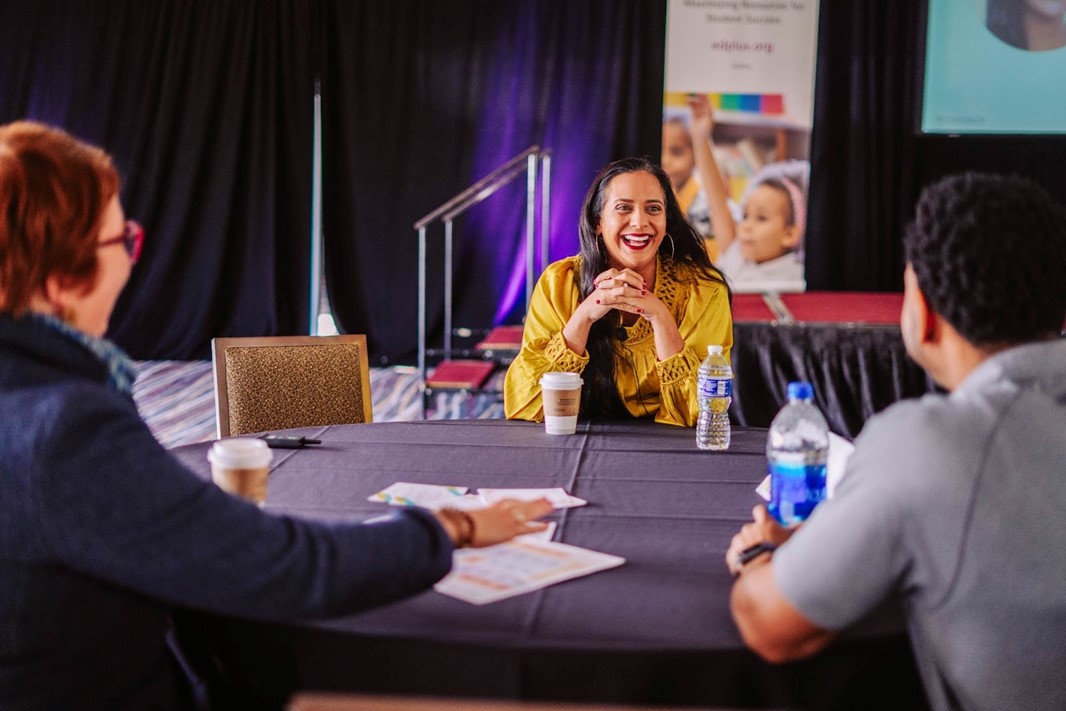Performative equity occurs when individuals engage in equity work more as a performance for personal validation than for the collective good of our students. This approach is detrimental to true student equity, as it often prioritizes individual recognition over meaningful change. The greatest example of this was seen around the world from the Australian “breakdancer” who occupied space on the international stage while appropriating an entire breakdancing culture while also serving as a professor of cultural studies. Of course we had to make a video of this on our Instagram page. Let’s explore what performative equity looks like through some common avatars:
The Horn-Tooters:
These individuals constantly highlight their equity efforts, expecting gratitude for their actions. This behavior can create a savior mentality, centering themselves rather than the students they claim to support.
Example: A school district leader who frequently shares in meetings and public forums about implementing a diversity hiring initiative. They make sure everyone knows how they personally advocated for the program, expecting praise and recognition. However, when issues of racial bias in hiring practices arise, they focus more on defending their past contributions rather than addressing the current concerns and making meaningful changes to the process.
The Finger Pointers:
These people are quick to point out others’ faults, often resorting to public shaming or accusations of racism. They are the gatekeepers of what is equity and what isn’t. While calling out injustice is important, this approach can alienate others and shut down meaningful dialogue.
Example: During a staff meeting focused on improving school culture, a teacher immediately accuses a colleague of being racist for suggesting a behavior management strategy that has been effective in their classroom. Instead of engaging in a constructive conversation about the potential impacts of the strategy on different student groups, the Finger Pointer publicly shames the colleague, leading to defensiveness and a breakdown in communication. This approach alienates the accused and stifles opportunities for growth and understanding.
The Platform Hoggers:
These individuals dominate spaces like articles, blogs, conference presentations, and keynote speeches without including people of color in those conversations. A criticism often leveled at figures like Robin DiAngelo is that they build platforms on the pain of marginalized groups without amplifying those voices directly. They can also publish the works of others using their name alone.
Example: An administrator who frequently presents at national conferences on the topic of educational equity, yet consistently fails to invite co-presenters or contributors of color. Despite their extensive work on topics like antiracism and disparities in education, their keynote sessions and publications rarely feature the voices of Black or Brown educators or students. This approach not only reinforces their own visibility but also marginalizes the very communities they claim to support by not providing them a platform to share their own experiences and solutions.
The Social Media Posters:
These people are quick to share their equity work on social media, but upon closer inspection, their efforts may not extend beyond the post.
Example: An assistant superintendent frequently posts on Twitter about celebrating Black History Month and all of her blogs and books that discuss equity. However, despite the online presence, there is little evidence of sustained efforts to incorporate antiracism and anti bias into the curriculum throughout the year or to address the systemic inequities faced by students of color in the district. The assistant superintendent’s online persona projects a commitment to equity, but the work doesn’t extend into meaningful, everyday practices in the district community.
The Pontificators:
These are the ones who dictate what others should do without taking further action themselves.
Example: A principal gives a passionate speech at a professional development session about the importance of culturally responsive teaching and encourages all teachers to adopt these practices. However, they never follow up with resources, training, or support for teachers to implement these strategies. Moreover, they do not address the lack of diversity in the curriculum or the need for systemic changes within the school. Their rhetoric sets expectations without providing the necessary tools or taking responsibility for the broader changes required.
The “What About Me”:
These individuals shift focus from the systemic issues being discussed to their own experiences.
Example: During a discussion on the lack of Black teachers in STEM fields, a white teacher shifts the conversation by saying, “As a woman in a male-dominated field, I’ve faced challenges too.” This response minimizes the unique challenges faced by Black educators and detracts from addressing the systemic issues at hand.
The ‘I’m Just Saying’ Folks:
These individuals frequently talk about equity and inclusive practices, but their actions do not align with their words. They may have an all-white staff and board of directors, and when they lead professional development sessions, they often dominate the conversation, despite advocating for strategies that emphasize student voice and engagement.
Example: A consultant who runs a well-known equity-focused organization gives a workshop on culturally responsive teaching. During the session, they repeatedly stress the importance of student-centered learning and the need for teachers to step back and let students lead discussions. However, throughout the entire PD, the consultant talks almost nonstop, leaving little room for participant interaction or discussion. Additionally, their organization’s leadership team and board of directors consist entirely of white individuals, raising questions about the organization’s commitment to the diversity and inclusion principles they promote.
The “All Lives Matter” Chanters:
These individuals fail to understand the concept of anti-Blackness and the historical and systemic challenges faced by Black people in the United States. They often lack recognition of critical issues such as police brutality, school suspensions and expulsions, and the incarceration system.
Example: During a discussion on the disproportionate suspension rates of Black students, an educator interjects with, “But don’t all students matter? Why are we focusing only on Black students?” This response ignores the specific and systemic issues impacting Black students and undermines efforts to address these inequities.
Recognizing when we fall into any of these categories is crucial. I’ve found myself in some of these roles, such as when I’ve tried to relate to a colleague’s experience by sharing my own. However, I’ve learned the importance of creating space for others to fully express their experiences without centering my own. Reflection is key to moving beyond performative equity and becoming true allies for our students. I encourage you to take a moment to reflect on whether you’ve seen yourself or others in these avatars. How can we all grow from these reflections?
As Glenn Singleton, Founder of Courageous Conversation says, “Organizations must embrace discomfort as part of growth. Leaders should share their own experiences to build trust and set a safe tone for others.” To deepen our understanding, I invite you to explore these concepts further in the book STEM for ALL! This resource will provide stories, reflections, and insights into how we can collectively work toward genuine equity in STEM education, #4Real.

